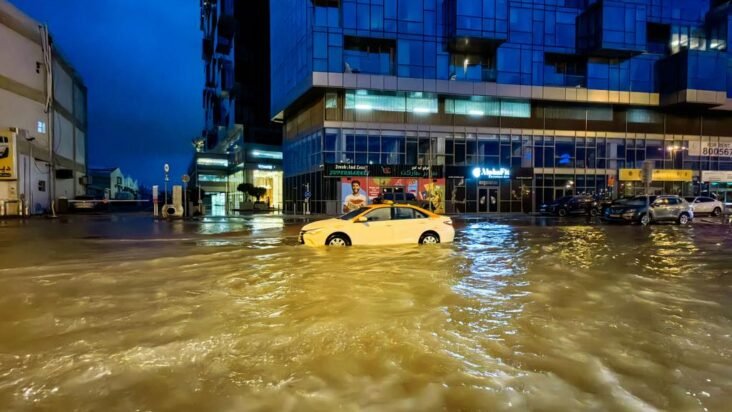
At least 20 people have now died from the intense flooding that hit the UAE but a strange theory has emerged about what could have intensified it.
The scenes coming out of the United Arab Emirates, and its major city of Dubai, over the last few days have been almost biblical.
Here in a land of desert, is flooding rains. Roads that are usually flecked with sand are now underwater.
At least 20 people have died in the storm that swept through parts of The Gulf. In places, a year and a half’s rain fell in 24 hours – about 150mm or more – the highest daily amount in the region for 75 years.
And now a far-fetched theory – one academic has gone so far to call it a “conspiracy theory” – has emerged about what caused the desert deluge.
It may sound like something out of a science fiction film, but the United Arab Emirates (UAE) uses a technology known as “cloud seeding”. It’s coming under scrutiny.
It’s not new technology. The nation of more than nine million has been actively trying to make it rain – or at least rain more than usual – for more than a decade.
But there are fears cloud seeding may have worked a little too well on Tuesday, leading to the historic flooding which also saw the world’s second busiest airport descend into chaos.
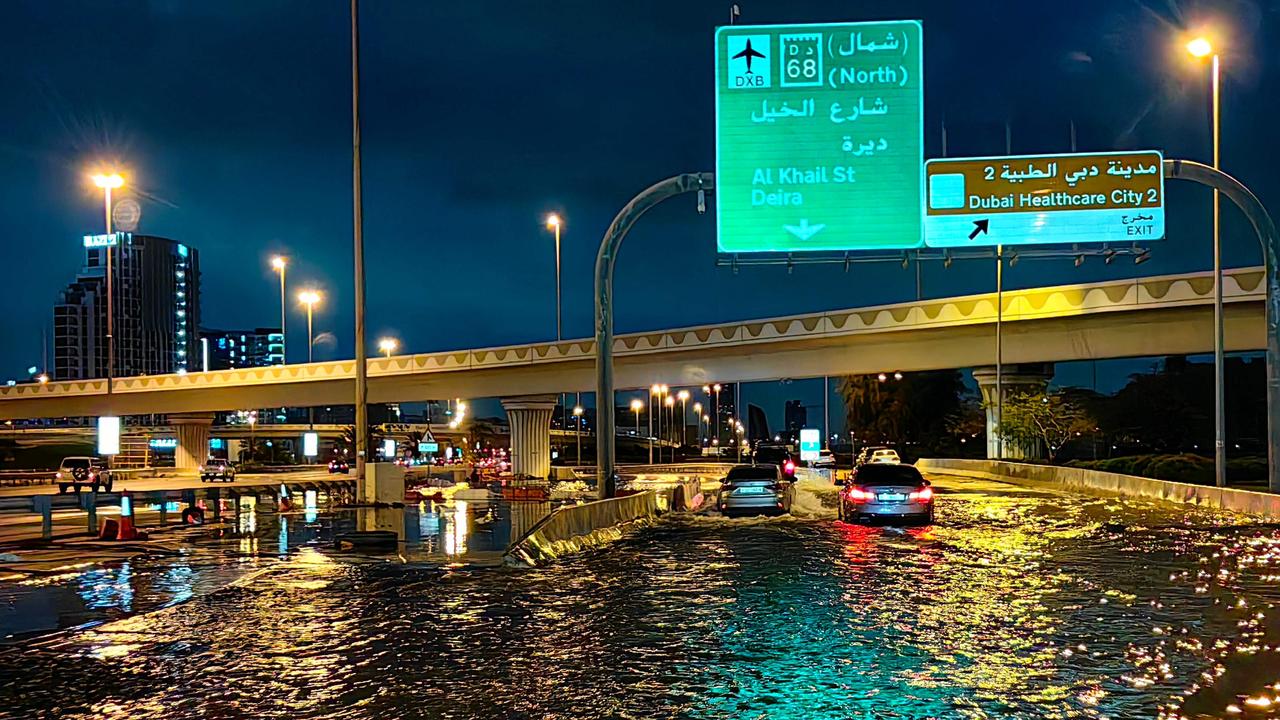
Motorists drive along a flooded street following heavy rains in Dubai early on Wednesday, April 17, 2024. Picture: Giuseppe Cacace / AFP
Worries about weather manipulation came on Tuesday when a meteorologist with the UAE’s National Centre of Meteorology (NCM), similar to Australia’s Bureau of Meteorology, told Bloomberg cloud seeding may have played a role in intensifying the system’s effects.
Additionally, it’s been reported six or seven aircraft associated with the UAE’s cloud seeding efforts flew before the heavens opened. The Associated Press looked into it and didn’t find seven planes. But by analysing flight tracking data it did find one aircraft that is often used to cloud seed was in the skies above the UAE on Monday.
But the NCM has vigorously denied it played any role in the storm.
“We are not responsible for this,” the agency told Emirati newspaper The National.
Academics in the field have seeded their own doubts as to whether cloud seeding could be behind the record rains.

People try to avoid getting wet as they cross a flooded street following heavy rains in Sharjah. Picture: Ahmed Ramazan / AFP
Cloud seeding – how it works
The UAE, and neighbouring nations such as Oman where 19 people died in this weather event, does not get a lot of rain.
Annually, only about 100mm of rain can be expected to fall on Dubai or the capital Abu Dhabi. Compare that to Sydney which gets about 12 times that amount, Darwin more than 17 times the UAE.
When the clouds do break, the moisture also tends to evaporate swiftly.
The UAE’s moisture misery is compounded because it’s growing fast – both in terms of people and industry.
The government has been trying to come up with ways to secure the country’s water supply.
Enter cloud seeding. It’s not a conspiracy theory in itself – it very much exists. It’s also a technology happening in several countries to encourage wet weather.
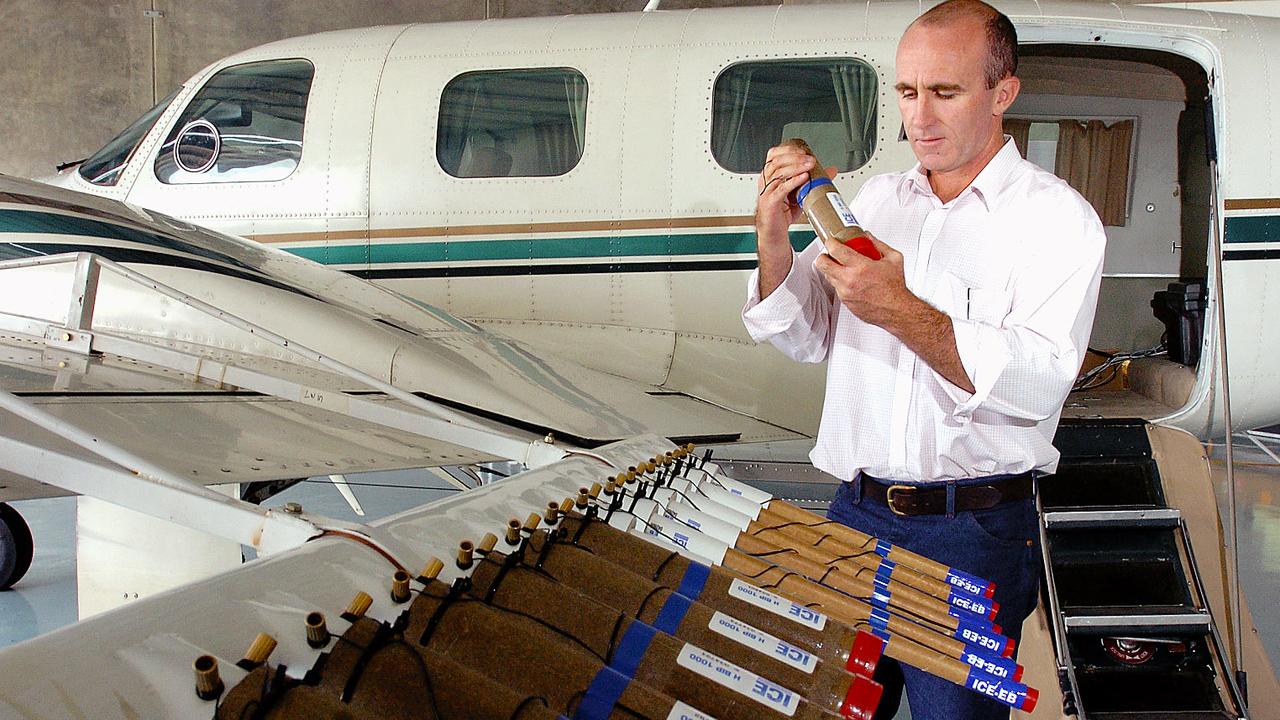
A plane equipped for cloud seeding.
It involves planes or drones scattering particles of the compound silver iodide or even just plain table salt into clouds.
Tiny moisture droplets attach themselves to these particles, much like they do when dust, pollen and sea salt normally floats into a cloud.
When enough droplets coalesce they form heavier ice crystals and gravity pulls them earthwards. As they melt they become rain.
Cloud seeding is designed to give a boost to the regular rain making process.
Another method, used since 2021, is to shoot electrical charges into clouds, causing them to clump together and trigger more rainfall.

Shooting electrical charges at clouds can encourage the water droplets to gang together and fall as rain.
Cloud seeding not fool proof
The technology has been worked upon since the 1940s but it’s only in the last few years that scientists were able to conclusively say cloud seeding had directly led a cloud to shed its stored moisture.
In 2022, the NCM’s Abullah al-Hammadi said cloud seeding had its limitations – it couldn’t just magic rain out of blue skies.
“Cloud seeding requires the existence of rainy clouds, and this is a problem as it is not always the case,” he told Reuters.
Nonetheless, he said, it was having a pronounced effect on the country’s rainfall.
“Cloud seeding increases rainfall rates by approximately 10 per cent to 30 per cent per year,” he said. “According to our calculations, cloud seeding operations cost much less than the desalination process.”
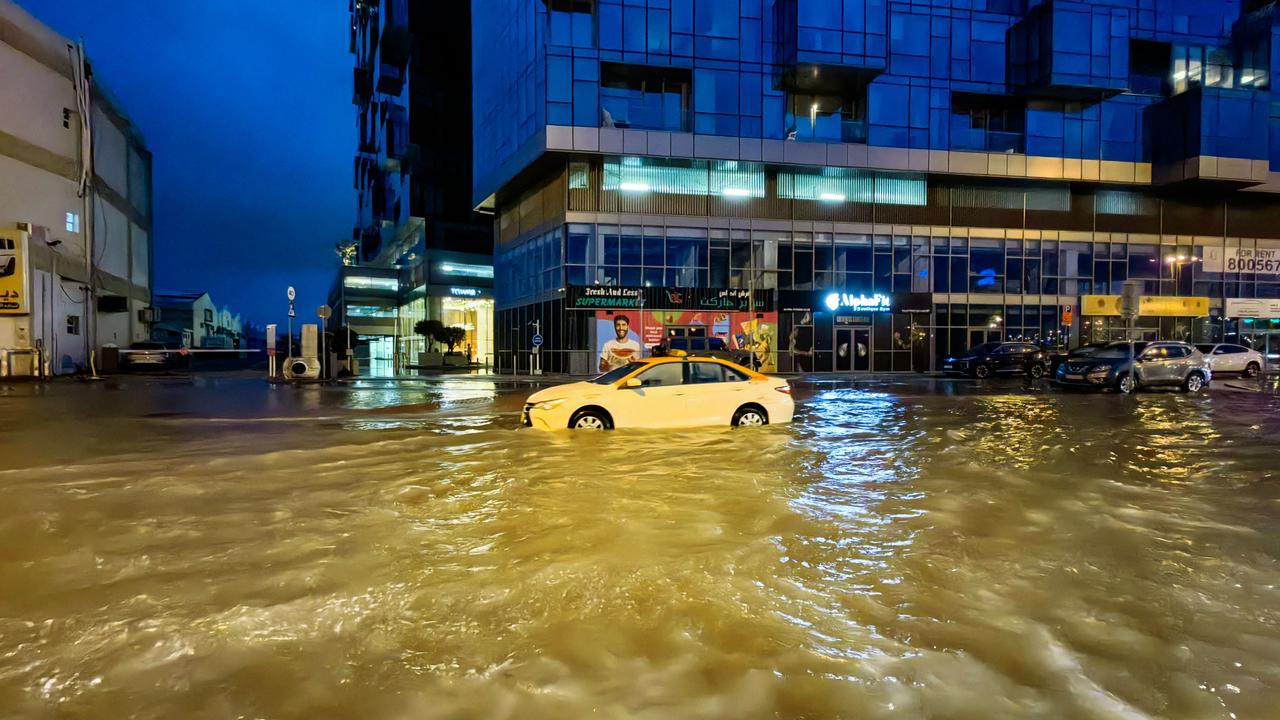
A taxi drives through a flooded street following heavy rains in Dubai. Picture: Giuseppe Cacace / AFP
There are concerns about the technology; shooting particles into clouds for instance, although it’s not been shown there are any toxicity risks.
There is also the worry that cloud seeding might not be creating any more rain overall, but rather causing it to fall earlier than it might otherwise have done thereby depriving another area of rain it was due to enjoy.

A man stands in a flooded street in Sharjah on April 17, 2024. Picture: Ahmed Ramazan / AFP
‘Not responsible’- UAE authorities
Flooding has occurred in the UAE after previous cloud seeding flights. But Tuesday’s storm was a scale of rain that the country had rarely seen.
Nonetheless, Emirati authorities have said it was nothing to do with them.
“One of the basic principles of cloud seeding is that you have to target clouds in its early stage before it rains, if you have a severe thunderstorm situation then it is too late to conduct any seeding operation,” deputy director general of the NCM Omar AlYazeedi told US news site CNBC.
He added that the agency had not done any cloud seeding missions during the event.
“Some say we are responsible for storms. We are not responsible for this,” NCM said in a statement.
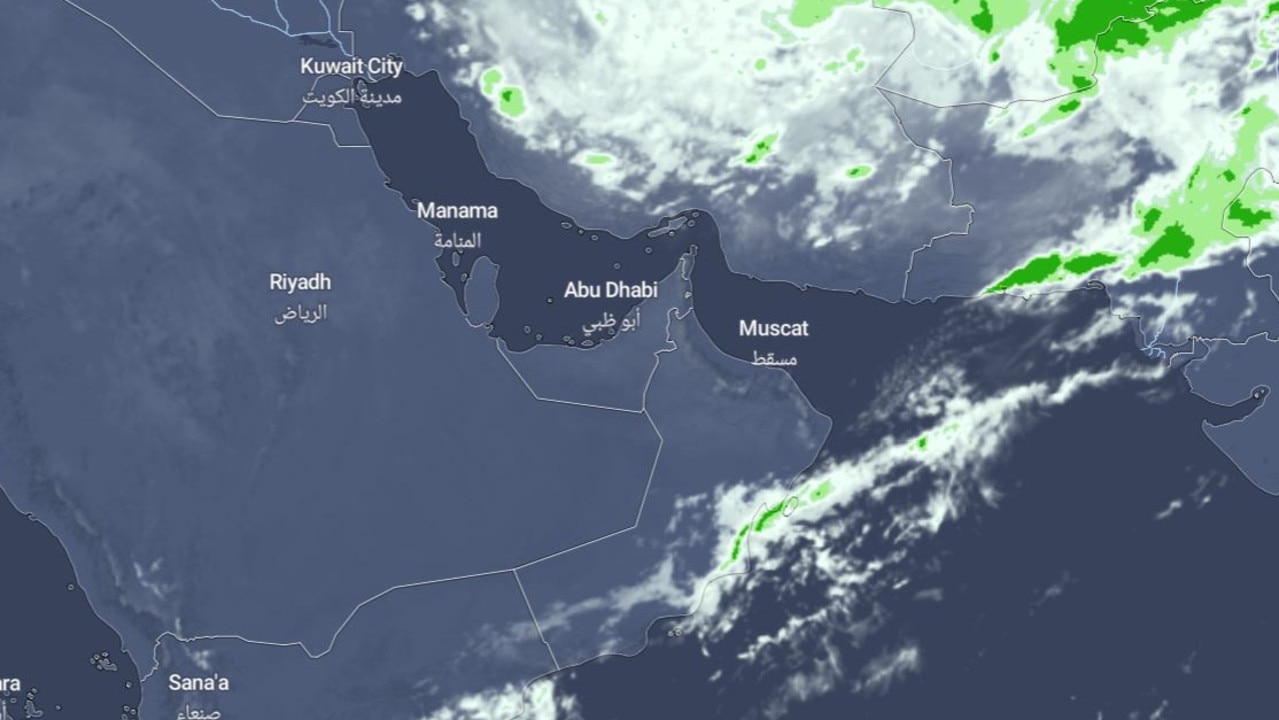
The bad weather that was over the UAE and Oman has now moved away across Iran and Pakistan. Picture: NCM
‘Conspiracy theory’
Talking to the magazine Time, Roslyn Prinsley, the head of disaster solutions at Australian National University’s Institute for Climate, Energy and Disaster Solutions, said the scale of Tuesday’s storm was well beyond the capabilities of cloud seeding.
“It is very unlikely that cloud seeding would cause a flood”.
Prof Prinsley added that while cloud seeding was real claims that it caused the floods was nothing more than “conspiracy theories”.
Professor Maarten Ambaum, a meteorologist at the UK’s University of Reading, was also sceptical. While this week’s weather event was exceptional in its intensity, it was quite usual in The Gulf to have long periods of dry weather interspersed by bursts of heavy rain.
“The UAE does have an operational cloud seeding program to enhance the rainfall in this arid part of the world,” he said.
“However, there is no technology in existence that can create or even severely modify this kind of rainfall event.”
Prof Ambaum also pointed out the storms were forecast ahead of time and included warnings of floods.
“In this particular case, there would have been no benefit to seed these clouds as they were predicted to produce substantial rain anyway.”
The flood’s effects were also likely exacerbated by the rarity of rain on this scale in The Gulf which could mean the infrastructure may not have been in place to rapidly siphon away the water. Elsewhere, it might have just have been a very wet day with far less disruption.
Prof Ambaum said a focus on cloud seeding could distract people from another major factor in the rain event – claimed change.
“Climate scientists have been warning for many years that such extreme events will become more likely in a warmer climate and, indeed, we see this happening around us now.”

